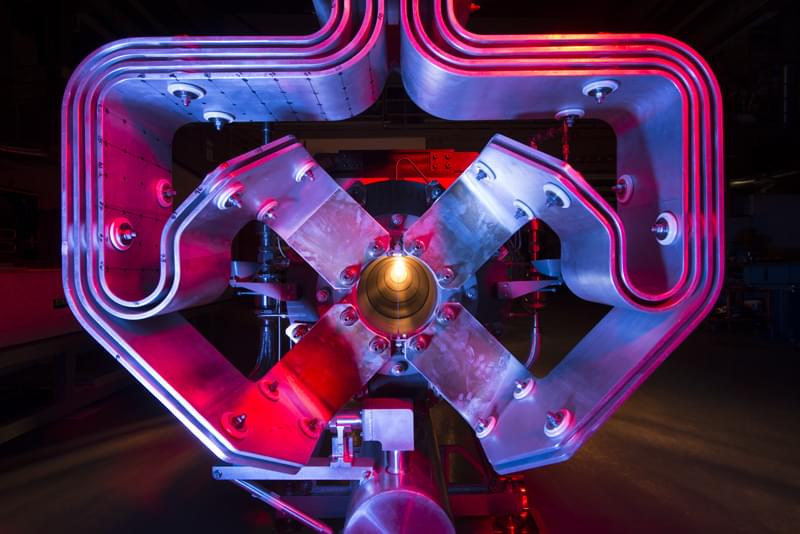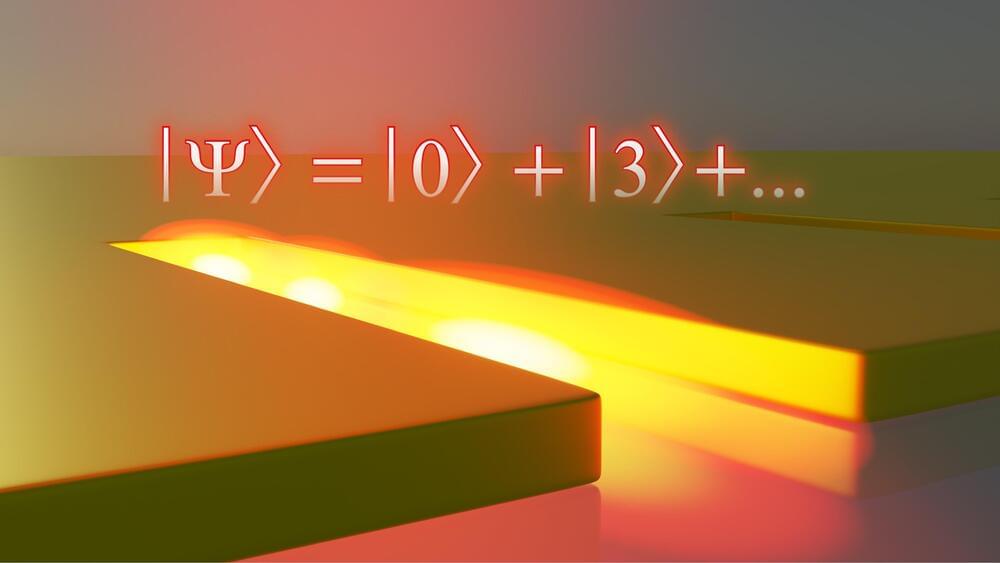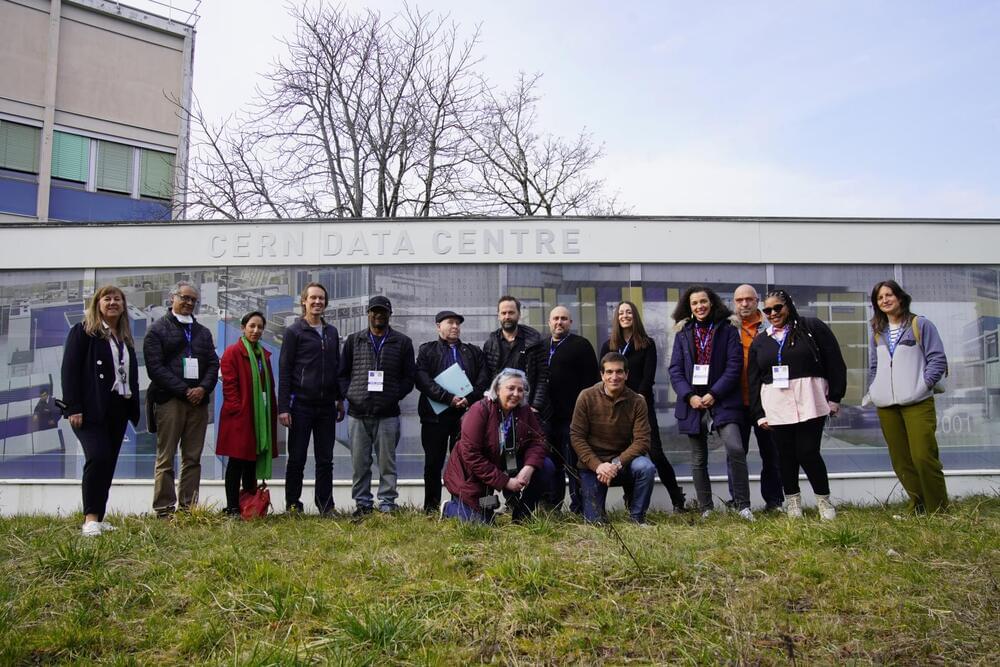Scientists at Tennessee’s Oak Ridge National Laboratory are attempting to establish a doorway to a parallel reality. The goal of the project is to depict a world that is nearly comparable to ours and where life is mirrored. The experiment’s leader, Leah Broussard, told NBC that the strategy is a little crazy, but it will completely transform the game. If the studies are successful, particles will be able to morph into images of themselves, allowing them to burrow through a solid wall. This might demonstrate that the cosmos we observe is merely half of what exists. Broussard revealed that he believes the test will yield a result of zero.
Category: particle physics – Page 371

String Theory Reveals the Multiverse
Year 2020 :3.
Atoms are made of protons, neutrons and electrons. And they are small. So small that 100 million hydrogen atoms would span the width of your fingernail. String theory proposes that at the most fundamental level of space there are objects that are much smaller than these elementary particles: tiny little filaments of energy, called “strings.”
The Dark Forest by Liu Cixin (Part 3) — Science Fiction Audiobook
https://youtube.com/watch?v=JfQWe–kciM&feature=share
This is the second novel in “Remembrance of Earth’s Past”, the near-future trilogy written by China’s multiple-award-winning science fiction author, Cixin Liu.
In The Dark Forest, Earth is reeling from the revelation of a coming alien invasion — four centuries in the future. The aliens’ human collaborators have been defeated but the presence of the sophons, the subatomic particles that allow Trisolaris instant access to all human information, means that Earth’s defense plans are exposed to the enemy. Only the human mind remains a secret.
This is the motivation for the Wallfacer Project, a daring plan that grants four men enormous resources to design secret strategies hidden through deceit and misdirection from Earth and Trisolaris alike. Three of the Wallfacers are influential statesmen and scientists but the fourth is a total unknown. Luo Ji, an unambitious Chinese astronomer and sociologist, is baffled by his new status. All he knows is that he’s the one Wallfacer that Trisolaris wants dead.
#audiobook.
#sciencefiction.
#fiction.
#fantastic
The Dark Forest by Liu Cixin (Part 2) — Science Fiction Audiobook
https://youtube.com/watch?v=0zOL6-u5GJo&feature=share
This is the second novel in “Remembrance of Earth’s Past”, the near-future trilogy written by China’s multiple-award-winning science fiction author, Cixin Liu.
In The Dark Forest, Earth is reeling from the revelation of a coming alien invasion — four centuries in the future. The aliens’ human collaborators have been defeated but the presence of the sophons, the subatomic particles that allow Trisolaris instant access to all human information, means that Earth’s defense plans are exposed to the enemy. Only the human mind remains a secret.
This is the motivation for the Wallfacer Project, a daring plan that grants four men enormous resources to design secret strategies hidden through deceit and misdirection from Earth and Trisolaris alike. Three of the Wallfacers are influential statesmen and scientists but the fourth is a total unknown. Luo Ji, an unambitious Chinese astronomer and sociologist, is baffled by his new status. All he knows is that he’s the one Wallfacer that Trisolaris wants dead.
#audiobook.
#sciencefiction.
#fiction.
#fantastic
The Dark Forest by Liu Cixin (Part 1) — Science Fiction Audiobook
https://youtube.com/watch?v=Zc7ysvsa6U0&feature=share
This is the second novel in “Remembrance of Earth’s Past”, the near-future trilogy written by China’s multiple-award-winning science fiction author, Cixin Liu.
In The Dark Forest, Earth is reeling from the revelation of a coming alien invasion — four centuries in the future. The aliens’ human collaborators have been defeated but the presence of the sophons, the subatomic particles that allow Trisolaris instant access to all human information, means that Earth’s defense plans are exposed to the enemy. Only the human mind remains a secret.
This is the motivation for the Wallfacer Project, a daring plan that grants four men enormous resources to design secret strategies hidden through deceit and misdirection from Earth and Trisolaris alike. Three of the Wallfacers are influential statesmen and scientists but the fourth is a total unknown. Luo Ji, an unambitious Chinese astronomer and sociologist, is baffled by his new status. All he knows is that he’s the one Wallfacer that Trisolaris wants dead.
#audiobook.
#sciencefiction.
#fiction.
#fantastic
Building a computer with a single atom
Considering a “computer” as anything that processes information by taking an input and producing an output leads to the obvious questions, what kind of objects could perform computations? And how small can a computer be? As transistors approach the limit of miniaturisation, these questions are more than mere curiosities, their answers could form the basis of a new computing paradigm.
In a new paper in EPJ Plus (“Towards Single Atom Computing via High Harmonic Generation”) by Tulane University, New Orleans, Louisiana, researcher Gerard McCaul, and his co-authors demonstrate that even one of the more basic constituents of matter — atoms — can act as a reservoir for computing where all input-output processing is optical.
“We had the idea that the capacity for computation is a universal property that all physical systems share, but within that paradigm, there is a great profusion of frameworks for how one would go about actually trying to perform computations,” McCaul says.

A new way to explore proton’s structure with neutrinos yields first results
Physicists used MINERvA, a Fermilab neutrino experiment, to measure the proton’s size and structure using a neutrino-scattering technique.
For the first time, particle physicists have been able to precisely measure the proton’s size and structure using neutrinos. With data gathered from thousands of neutrino-hydrogen scattering events collected by MINERvA, a particle physics experiment at the U.S. Department of Energy’s Fermi National Accelerator Laboratory, physicists have found a new lens for exploring protons. The results were published today in the scientific journal Nature.
This measurement is also important for analyzing data from experiments that aim to measure the properties of neutrinos with great precision, including the future Deep Underground Neutrino Experiment, hosted by Fermilab.

When the light is neither ‘on’ nor ‘off’ in the nanoworld
Whether the light in our living spaces is on or off can be regulated in everyday life simply by reaching for the light switch. However, when the space for the light is shrunk to a few nanometers, quantum mechanical effects dominate, and it is unclear whether there is light in it or not. Both can even be the case at the same time, as scientists from the Julius-Maximilians-Universität Würzburg (JMU) and the University of Bielefeld show in the journal Nature Physics (“Identifying the quantum fingerprint of plasmon polaritons”).
“Detecting these exotic states of quantum physics on the size scales of electrical transistors could help in the development of optical quantum technologies of future computer chips,” explains Würzburg professor Bert Hecht. The nanostructures studied were produced in his group.
The technology of our digital world is based on the principle that either a current flows or it does not: one or zero, on or off. Two clear states exist. In quantum physics, on the other hand, it is possible to disregard this principle and create an arbitrary superposition of the supposed opposites. This increases the possibilities of transmitting and processing information many times over. Such superposition states have been known for some time, especially for the particles of light, so-called photons, and are used in the detection of gravitational waves.
Space dust as Earth’s sun shield
On a cold winter day, the warmth of the sun is welcome. Yet as humanity emits more and more greenhouse gases, the Earth’s atmosphere traps more and more of the sun’s energy and steadily increases the Earth’s temperature. One strategy for reversing this trend is to intercept a fraction of sunlight before it reaches our planet. For decades, scientists have considered using screens, objects or dust particles to block just enough of the sun’s radiation—between 1 or 2%—to mitigate the effects of global warming.
A University of Utah-led study explored the potential of using dust to shield sunlight. They analyzed different properties of dust particles, quantities of dust and the orbits that would be best suited for shading Earth. The authors found that launching dust from Earth to a way station at the “Lagrange Point” between Earth and the sun (L1) would be most effective but would require astronomical cost and effort. An alternative is to use moondust. The authors argue that launching lunar dust from the moon instead could be a cheap and effective way to shade the Earth.
The team of astronomers applied a technique used to study planet formation around distant stars, their usual research focus. Planet formation is a messy process that kicks up lots of astronomical dust that can form rings around the host star. These rings intercept light from the central star and re-radiate it in a way that we can detect it on Earth. One way to discover stars that are forming new planets is to look for these dusty rings.

A unique CERN-inspired collaboration see physicists team with science-fiction titans
This February sees the launch of Collision: Stories from the science of CERN, the culmination of a unique, two-year-long collaboration between fiction writers and pioneering physicists.
As part of Comma’s Science-into-Fiction series, the project paired award-winning UK writers with leading physicists and engineers working at CERN, to explore different aspects of CERN’s research, as well as its historical legacies, through fiction and accompanying essays (or afterwords) by the scientists.
The project began in the Summer of 2021 when particle physicists connected to CERN around the world were invited to be part of a new European-wide public engagement project. Over 150 topic submissions from scientists working on different aspects of science were received. Writers were then invited to respond to the list of ideas and were paired with the physicists whose ideas inspired them. We were overwhelmed with positive responses.